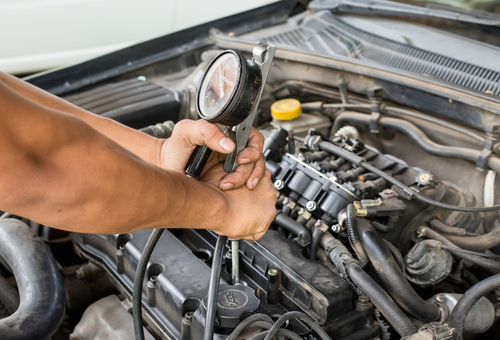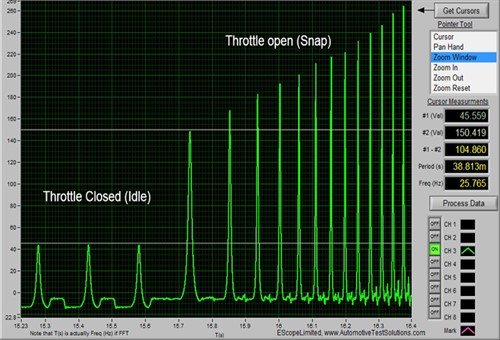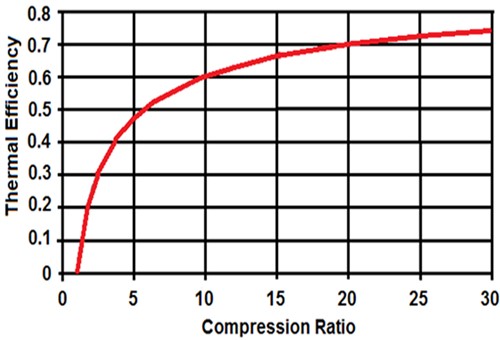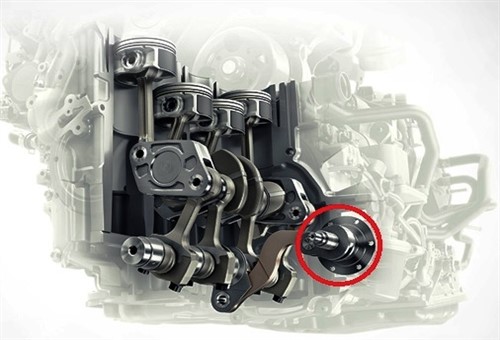
In recent years, there has been much talk about replacing conventional vehicles with electric and hybrid vehicles to reduce the impact of fossil fuels on the environment. However, while the flip of this argument might be that internal combustion engines are cleaner and more efficient now than they have ever been, the fact is that except for one possible technology, internal combustion engines have essentially reached the end of their potential to be developed any further.
It might be true that giant strides have been made in recent years to make internal combustion engines cleaner and more efficient, but most of these advances rely on hugely complicated, intricate, and expensive electronic control systems to be effective. We all know this, but what may not be so widely known is that we are about to face yet another technology known as variable compression, that depends on hugely complex electronic control systems to work. In this article, we will take a closer look at this technology, as well as the problems with it we might expect to see soon. Let us start with stating-
Several problems with developing the basic technologies that underpin internal combustion any further remain. Chief among these are the facts that modern fuels have relatively low calorific values, and that much of the calorific value of modern fuels is wasted in the form of heat that is shed to the atmosphere.
From a design and engineering perspective then, the obvious answer would be to a) extract the maximum amount of energy from currently available low-energy fuel, and b), to minimise or reduce the amount of heat that is created during the energy extraction process. However, the problem with this approach is the fact that new engines designs have to incorporate measures to reduce frictional losses, pumping losses, and severe parasitic power losses caused by reciprocating motions of heavy components. Lubrication requirements, as well as losses caused by generating sufficient electrical current to supply critical systems also represent a significant percentage of “wasted” energy, all of which leaves engine designers with very few options.
At first reading, none of the above may appear to be relevant to our jobs as technicians. However, of the few options that engine designers have left to increase the efficiency of internal combustion engines, the most important is compression ratios, which is at the heart of the problem of how to improve combustion.
The above is saying a lot, but to understand how compression ratios will affect new engine designs, and with it, our ability to diagnose and repair high compression engines, we need to understand what cylinder compression is, and how it affects engine operation. Let us explore the concept of cylinder compression by asking this question-

Image source: https://www.searchautoparts.com/sites/www.searchautoparts.com/files/images/Figure-1_2.png
Consider the above image that shows a scope trace of a series of peak cylinder pressures obtained from one cylinder with a pressure transducer. The first three peaks show a constant pressure value while the engine is idling, while the steeply rising values that follow show a rapid increase in peak cylinder pressures as engine speed increases. So how is this possible on an engine with a fixed compression ratio?
The answer is simple, but to understand what we are seeing on this oscilloscope trace, we need to discuss a common misconception about compression ratios-
Many people, including some mechanics and technicians of this writer's acquaintance, understand the term "compression ratio" to mean that a ratio of say 10:1 means that one atmospheric pressure is compressed to yield a pressure value that is equal to 10 atmospheric pressures during a compression stroke. While this makes some intuitive sense, this interpretation is wrong, and there are, in fact, two types of compression ratios we need to discuss, so let us start with-
Static compression ratio
The accepted definition of the term states that a compression ratio is determined by the total swept volume of a cylinder when the piston is at BDC, which value is divided by the volume in the cylinder when the piston is at TDC. For instance, if the total volume of a cylinder is 100cc when the piston is at BDC, and the volume of the cylinder above the piston is 10cc when the piston is at TDC, the compression ratio of that engine is 10:1, which value is based solely on engine specifications and piston/combustion chamber design features.
Nonetheless, a static compression ratio is largely what determines the thermal efficiency of any engine, since this value largely determines how much energy can be extracted from a known quantity of fuel as a function of the adiabatic* heating of the air/fuel mixture.
*”Adiabatic” heating refers to the rise in the temperatures of a gas that is being compressed, such as happens during the compression stroke in a running engine. However, this value is very difficult to quantify because air/fuel mixtures either absorb some heat from hot engine surfaces, or shed it to cold engine surfaces at different times during normal engine operation. Therefore, this value is calculated using the Ideal Gas Law (and other laws), as opposed to measuring it directly or inferring it from the static compression ratio.
Dynamic compression ratio
From our perspective as technicians, knowing an engine's static compression ratio has limited value. What is more important to know is what an engine’s dynamic compression ratio is, because unlike static compression ratios, dynamic compression ratios take into account the volume of gases that sometimes-
While knowing the dynamic compression ratio of an engine is a useful piece of information to have for diagnostic purposes, it should be noted that dynamic compression ratios are always significantly lower than static compression ratios. The principal reason for this is that the ratio of specific heats* that determine combustion efficiencies are (almost) never constant in any engine during normal engine operation.
* In its simplest form, this ratio is defined as the ratio between how much heat a gas can absorb if that gas is under constant pressure, and how much heat that same gas can absorb if the volume of gas remains constant.
As a practical matter, however, the ratio of specific heat in a working engine changes constantly because of the compressed air/fuel mixture shedding some heat to the engine, and changes in compression pressure caused by factors such as variable valve timing that can, for instance, increase/decrease the efficiency of exhaust scavenging processes at different points in an engines' operating range.
So what does all of this have to do with diagnosing engine compression issues? It simply means that if (and when) we are required to diagnose compression/combustion issues on the various variable compression engines designs we will soon encounter, we will need to know yet another pressure value, this being the-
Let us use a practical example to illustrate this value. If for instance, an engine has a static compression ratio of 10:1 and a dynamic compression ratio of 7.5:1, we can calculate the actual peak compression pressure in the cylinder by multiplying 7.51.3 (the dynamic compression pressure) by the atmospheric pressure.
NOTE: While the ratio of specific heats for atmospheric air is 1.4, this calculation is typically based on a value of 1.3, since this correction accounts for variables that are based on different engine designs and different materials used in engine construction by different manufacturers. As a practical matter, the lower value provides a uniform basis for calculating cylinder pressure values regardless of engine design and/or cylinder configuration.
From a diagnostic perspective, knowing the difference between the actual and desired peak cylinder pressures will be of far more value than knowing either (or both) the static and dynamic compression ratios simply because combustion efficiency depends on the actual peak cylinder compression pressure, and not on the compression ratio. Of course, this statement begs this question-
While it is true that higher compression ratios, and by implication, higher peak cylinder pressures produce improved combustion (and better fuel economy as a corollary), this is true only up to a point because the laws of physics impose several limiting factors on how high cylinder pressures can go. Consider the graph below-

Image source: https://www.searchautoparts.com/sites/www.searchautoparts.com/files/images/Figure-2_3.png
The horizontal axis of this graph indicates static compression ratios plotted against increases in engine thermal efficiency on the vertical axis. Although we know that the majority of modern vehicles have static compression ratios of between about 10:1 and about 14:1, the upper end of this range typically applies to engines in high-end supercars, and advanced engine designs such as Mazda's Homogenous Charge Compression Ignition engine.
Other high-compression engines intended for mass-consumption are currently under development, but the important thing about this graph is the sharp drop-off in engine efficiency at compression ratios above about 15:1. This drop-off is because air can absorb only a limited amount of heat energy, which is what ultimately determines how a detonation flame propagates through an air/fuel mixture.
We need not delve into the complexities of combustion processes here, but suffice to say that the oxygen in the mixture only serves as an oxidant in the combustion process, and in a stoichiometric mixture, all the oxygen is used to burn all of the fuel. At the risk of putting too fine a point on it, the heat released during the oxidation event causes the nitrogen component of the air/fuel mixture to expand during a combustion event, which is the mechanism that drives the piston downwards during the power stroke.
Thus, even if engine designers were willing to accept the cost and weight penalties that come with increasing engine strength to allow for higher compression ratios, the fact that current fuels auto-ignite at high temperatures would make engine knock-control strategies extremely difficult to implement at compression ratios much above current ratios. From design and engineering perspectives,the cost of controlling engine knock and the concomitant engine damage would far outweigh the small increases in engine efficiencies that could be had by heating air few degrees more though increasing peak compression values, which begs this question-

Image source: https://www.searchautoparts.com/sites/www.searchautoparts.com/files/images/Figure-4_3.png
The image above shows the 2.0L, supercharged, four-cylinder engine currently in use in the Nissan Infiniti QX50. This engine was first introduced in the 2018 production year, which does not make it old enough to have appeared in many independent workshops.
In simple terms, the crankshaft in this engine is not directly connected to the pistons. The component circled in red is an electronically controlled actuator that acts on a linkage, which has the function of effectively pulling the crankshaft down into the crankcase, thereby pulling the pistons down into the cylinder bores by as much as 6mm. The practical effect of this is that the while the engine’s stroke remains the same, the stroke happens lower in the cylinders, thus reducing the peak cylinder pressure because there is now a bigger volume between the top of the pistons and the cylinder head.
Raising the crankshaft reduces this volume, which raises the peak cylinder pressure, and while all of this sounds good in principle, the actual position of the crankshaft at any given point in the engine’s operating range depends on many parameters. These include among others, engine speed, engine load, the position of the throttle plate, the rate of throttle plate movement, and of course, engine coolant temperature.
When this control system works as intended, peak cylinder pressures can be precisely controlled to raise the peak cylinder pressure at low to moderate engine speeds and lowering the peak cylinder pressure at high engine speeds to take advantage of increased adiabatic heating rates and to reduce the effects of premature or uncontrolled ignition of fuel at the same time. In practice, this system produces increases in engine efficiency and fuel economy of up to 27% without any weight penalties, and while this is good for consumers, there are serious downsides for us, as technicians.
For instance, if the system fails in some way and the engine starts misfiring or losing power, where do you start looking for the fault? There will no doubt be one or more Nissan-specific trouble codes present, but since it is almost certain that independent workshops will not have access to OEM service information and factory-level scan tool software anytime soon, it seems that we will not be able to diagnose some kinds of faults on these engines. Or for that matter, designs by other manufacturers that accomplish the same thing by rotating the crankshaft in floating, eccentric main bearing housings, or by using actuators and pressurised engine oil to rotate piston gudgeon pins in eccentric bearings in the small-ends of connecting rods, which leaves us with this-
It seems that mechanisms to manipulate compression ratios and peak cylinder pressures might be the last frontier in the development of internal combustion technology, but what is certain is that all of these systems will require highly complex algorithms and monitoring/control strategies to make them work reliably in the real world.
What is also certain is that these control strategies will be implemented at higher levels of integration with more complex micro-controllers through higher-speed communications systems than we have ever seen before. It also seems likely that these types of systems will be with us in ever-greater numbers for at least the near future. Thus, until electric vehicles become the norm rather than the exception in our bays, the only way we are ever going to diagnose and fix these systems is to start learning as much about them as we can-starting as soon as possible.